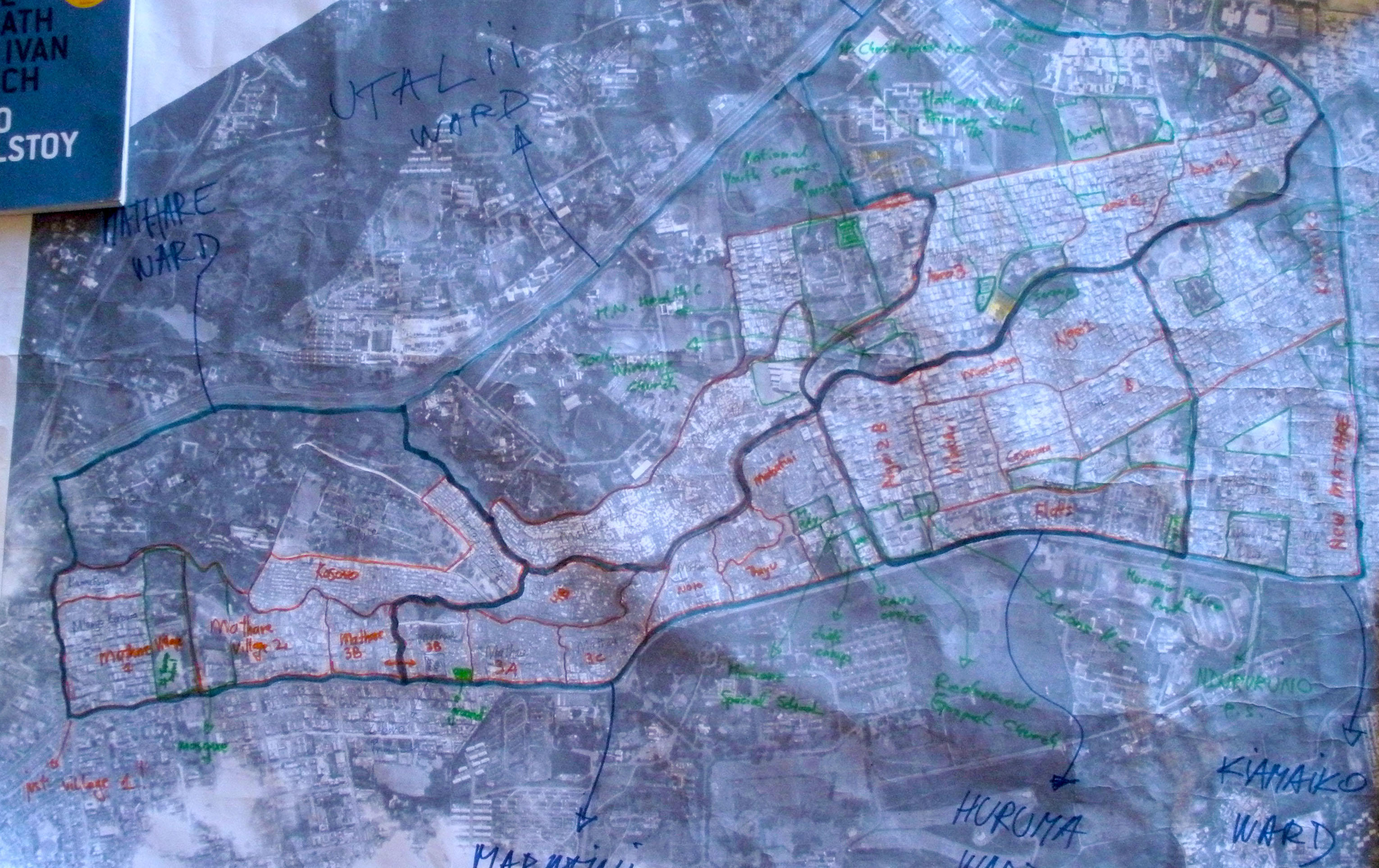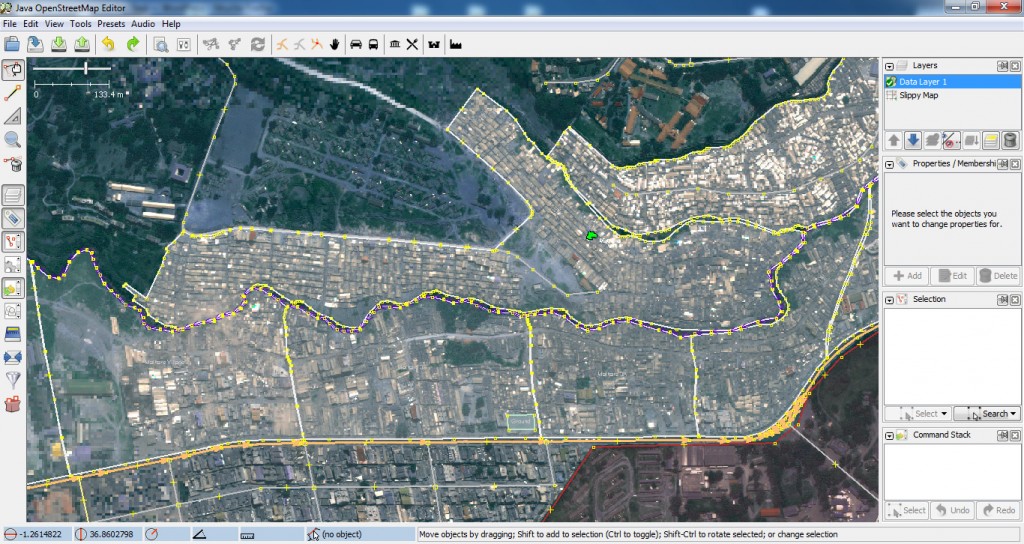The biggest slums in Nairobi (like Kibera and Mathare) usually consist of different villages. That is why before we started working in Mathare we had to determine where these villages are located.
This was/is important for many reasons:
- Determining the area. By locating the villages of the slum we outlined the area of Mathare.
- Planning purposes. We use these villages to plan how different teams will operate. The idea is that each team maps its own village, bringing me to the next important thing:
- Each village needs to be represented. A person coming from a certain area knows that area best.
- And the last but not least – security. There is no way that a person, specially coming from outside, can freely walk the streets of Mathare.
For the purpose of determining the village boundaries we printed out the satellite imagery of Mathare, which was donated to us by the American Association for the Advancement of Science. After that I gave the satellite imagery to Simon Kokoyo form COOPI and Reality Tested Youth Program. He walked around the slum and talked to elders, who helped him determine the village boundaries of the slum by drawing them on the printed satellite imagery.

Drawn villages of Mathare
I uploaded the satellite imagery into JOSM and digitized the boundaries according to the drawn image.

Digitizing in Java OpenStreetMap Editor
And HERE are the villages of Mathare and Mathare slum area in OpenStreetMap – the borders have already changed couple of times :)